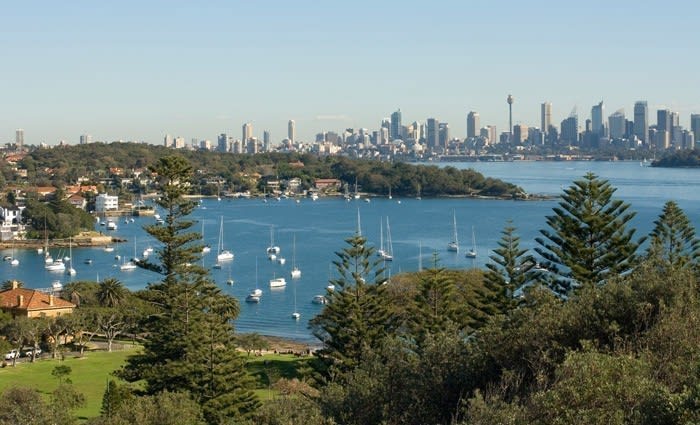Sydney's cheaper suburbs are outperforming the upmarket areas for price growth: Hotspotting's Terry Ryder
Real estate abounds with myths and misconceptions, most of them contradicted by the research evidence.
Perhaps the oldest and most enduring of property’s cliches is that you get the best capital growth in the prime inner-city suburbs.
That old furphy is usually stated as a self-evident truth without supporting evidence, or with a few cherry-picked examples that appear to back the theory.
The truth is, superior long-term growth can be found in all manner of places. The key elements driving growth seldom relate to proximity to an icon, like the Sydney CBD.
You’re just as likely to find outstanding growth rates in middle-ring suburbs, the affordable outer-ring areas and in selected regional centres, while some iconic locations have poor growth rates (Surfers Paradise being a standout example).
Cheaper areas often shine because they attract the great mass of buyer demand, thanks to their affordability.
Following four years of strong price growth in Sydney, most suburbs have attractive long-term growth rates (average annual growth in median prices over 10 years), despite Sydney’s below-par performance between 2003 and 2013.
Many now have long-term capital growth averages above 10 percent a year. And the top performers are widely spread across the Sydney metropolitan area.
Inner-city Burwood (median price $2 million) has the same long-term growth rate (10.4 percent per year) as Busby ($640,000), which is out west near Liverpool.
Balmain ($2.17 million) and Canley Vale ($820,000) both have growth rates around 10 percent per year.
Emerton, out west near Blacktown with a median price of $540,000, has a slightly better capital growth rate (10.5 percent) than Eastwood, with a median of $1.87 million (10.2 percent).
Seriously upmarket Mosman (median $3.87 million), has a modest growth average of 6.2 percent, whereas Lethbridge Park (median $520,000) has averaged 10.2 percent, despite its downmarket image and location (part of the City of Blacktown).
St Marys ($660,000), near Penrith, and nearby Tregear ($505,000), have growth rates above 10 percent per year, on a par with Rose Bay ($4.1 million) and considerably better than Gordon ($2.5 million), where growth has averaged 7.6 percent per year.
Islington ($670,000), a suburb of Newcastle, is equal to Hurstville ($1.6 million) in Sydney’s south.
Having some kind of stigma is no barrier to good capital growth.
So it doesn’t surprise me to see new research which refutes one of the most cherished beliefs in real estate – that areas with high crime rates have inferior capital growth.
The report shows that affordable areas attract strong demand, generating above-average price growth, regardless of the local crime statistics. This is particularly so if a cheaper area is undergoing gentrification.
According to RiskWise Property Research, housing in high-crime areas across Australia is outperforming the general property market. This correlates with Hotspotting analysis which shows that low-priced locations, including those stigmatised as “problem” areas, often have strong capital growth.
“The research house discovered high-crime areas, despite expectations, are trumping their safer neighbouring suburbs when comparing their five-year growth to the city’s median,” says RiskWise CEO Doron Peleg.
He says investors commonly attribute too much weight to crime figures and should more objectively analyse the financial risks when making property investment decisions.
“Our nationwide research actually found gentrifying suburbs with high crime typically deliver strong price growth and outperform the local benchmark.
“We found affordable high-crime areas with significant gentrification are likely to produce strong price growth, particularly when dwelling prices in the inner and middle rings are unaffordable.”
In Melbourne, some suburbs significantly outperformed the market. Frankston North, a notable downmarket suburb in the far south-east, delivered growth of 102% over the past five years.
“Our research shows that suburbs like Frankston North are not outliers and similar results can be found in each of the major cities,” Peleg says.
“Busby in the western suburbs of Sydney is another example. This suburb consistently endured some of the highest gun violence rates across the city, yet it delivered growth above the median for Greater Sydney.”
In Sydney, eight of the Top 10 high-crime areas outperformed the market due to very strong demand from owner-occupiers and investors for affordable properties.
“Together, these high-crime Sydney suburbs delivered outstanding five-year growth of 87% for houses and 65% for units, outperforming the Sydney price growth benchmark,” he says.
“Brisbane and Gold Coast high-crime areas also typically outperformed the market.”
While price growth in Adelaide and Perth was below the local benchmark, high-crime areas undergoing significant gentrification delivered strong growth. For example, Prospect in Adelaide outperformed the local housing market with 26% median price increase over the past five years.
Terry Ryder is the founder of hotspotting.com.au
twitter.com/hotspotting
